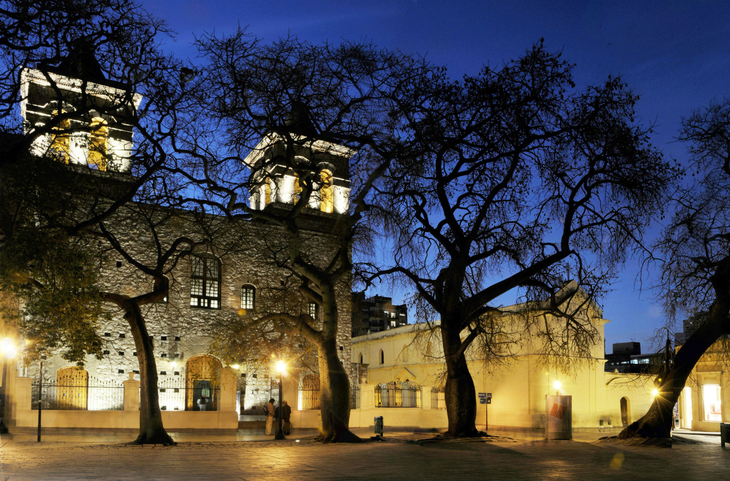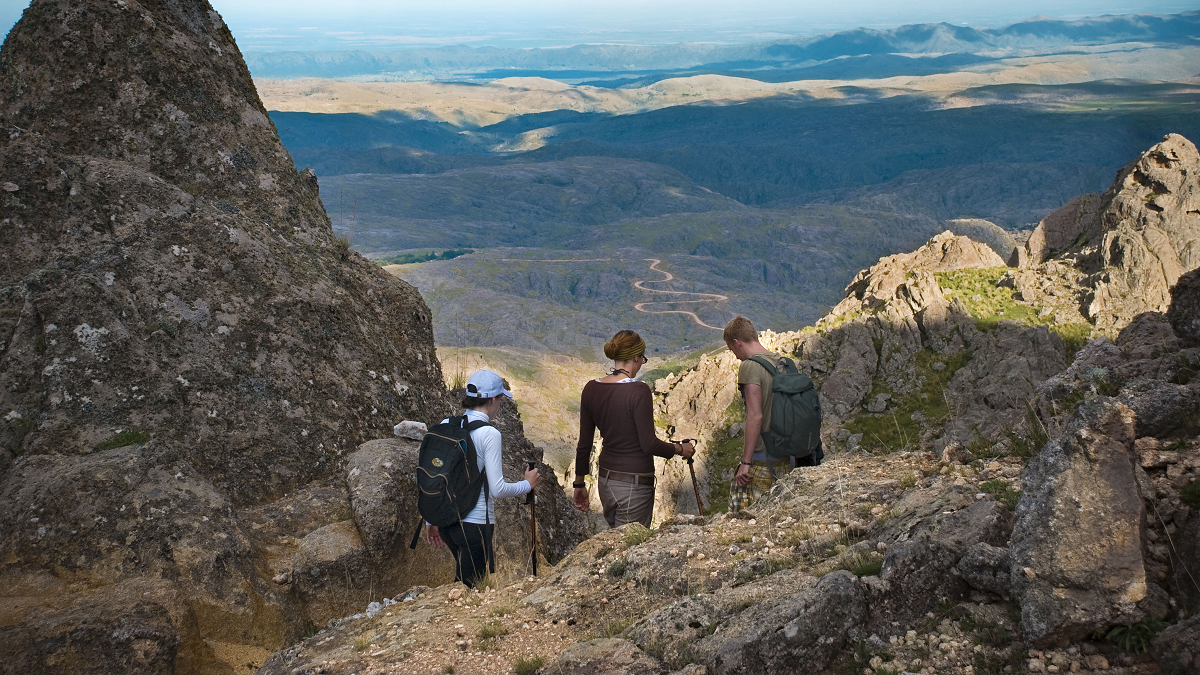Tour the Wine Route
The wine roads of Córdoba allow you to discover the mountain landscapes in which the country’s wine culture was conceived. Being able to transit them is an opportunity to perceive the aromas and flavors that identify the wine of the province.
It is proposed to follow a tour through different wineries to enjoy this product from its roots. The experience makes it possible to learn about the production techniques and other curiosities from the mouths of the producing families.
Tour participants learn about milestones such as the invention of lagrimilla, a drink that may well be considered the first wine in Latin America. The chronicles of the time realize that it was so strong that it caused tears.
The wine route must have a key stop at Estancia Jesús María, the oldest winery in Argentina. In their terroirs, at the beginning of the 17th century, the religious improved the strains that the Spanish pioneers had planted.
Traveling on the wine trail is a hack that rescues memories of other times, on the occasion of perceiving intense sensations, such as those generated by the pure air of the mountains and the aroma of its flowers and herbs.
These are brands that permeate the vineyards and thus give Cordovan wine character. To explore this historical facet of the province, there are options such as joining the excursions offered by agencies such as Nativo Viajes.
On this long weekend, the company proposes the experience of “Los Caminos del Vino del Norte”, which has a price that starts at 4,750 pesos. It is an ideal alternative to learn about the legacy of the Jesuits.
It also demonstrates the influence of the Italian immigrants who arrived in Colonia Caroya, where they began a type of artisanal production based on unconventional vines, with a preference for the raspberry grape.
With that in mind, they visit the traditional La Caroyense winery, which has been producing wines since 1930. Then, they visit Terra Camiare, a project of high technological sophistication that is consolidated both nationally and internationally.
Trekking to Los Gigantes
“Los Gigantes” is a granite formation that can be seen between striking silhouettes and labyrinth-like paths. It is about 350 million years old and is located at the northern end of the Sierras Grandes.
These characteristics make it one of the most important climbing centers in the country. Its walls add about 400 equipped routes that are ideal for practicing this activity.
To reach the highest point of the massif, which is Cerro Mogote, one of the favorite paths is the Sendero Norte. It is accessed via the “Casas Nuevas” area, where the Bazán family lends its help to start the expedition.
The crossing lasts four hours. It requires crossing slopes, streams and valleys. After a series of climbs you reach the top, which is located at 2,374 meters above sea level. Hiring an authorized guide is recommended.
In that sense, one of the trekking experiences that can be enjoyed in the area is the excursion offered by Polylepis Trip & Adventure. It lasts one day, during which the Cerro Mogote is ascended.
The challenge also begins at the Bazán post on the way to the Northern Path. Corners such as Cuesta de los Caracoles, Cerro Bola and Refugio Nores are crossed. After that, the summit is reached.
After enjoying the achievement, we descend Cuesta del Perro towards Casas Nuevas, where the trekking ends. It is important to know that the difficulty of this excursion is high, with walks that exceed eight hours of activity.
Enjoy Oktoberfest
Villa General Belgrano is located 90 km southwest of the City of Córdoba. It is accessible through a route characterized by a series of hidden passages between the mountains and the bluish calm of Lake Los Molinos.
Walking through the city makes it possible to appreciate its Central European imprint in countless expressions. It is a stamp that can be seen in the architecture of their houses, the menus of cafes and restaurants and around their celebrations.
cordoba beer.png
One of its differential events is Oktoberfest, the National Beer Festival. It began on Friday, September 30, and will continue until Monday, October 10, so it will coincide with the long weekend.
Those who visit the city on those days will find music and dance parades, among other manifestations of the alpine legacy that distinguish this corner of the Calamuchita Valley.
It is key to taste varieties of beer, typical dishes and the delicacies inherited from Central European confectionery, such as strudel or black forest cake. The range of delicacies complements an endless number of attractions to participate in with the family.
To access the main stage of Oktoberfest, ticket prices are between 1,600 and 4,000 pesos per day. Those of the long weekend cost 3,000 pesos. In addition, subscriptions can be purchased.
The party will feature a renowned grid: Miranda will perform on Friday the 7th and La Bersuit on Saturday the 8th. They will then be followed by Vilma Palma e Vampiros and Los Pericos, who will take over on Sunday the 9th and Monday the 10th, respectively.
The bands will be accompanied by host associations such as dance groups, orchestras, pipers and tappers. Meanwhile, those who have the possibility of staying until Tuesday the 11th, will be able to enjoy the Philharmonie and The Beats.
Discover the Ansenuza National Park
The Ansenuza National Park constitutes a new Natural Protected Area that includes more than 660 thousand hectares. It encompasses the Mar Chiquita or Mar de Ansenuza lagoon, with salty waters and therefore a true inland sea with a high visual impact.
The area has great environmental diversity. In addition to the great saline mirror, it contains riverbeds, other lagoons, muddy beaches, thickets of bushes and cardons, Chaco forests, grasslands and savannahs.
The set allows exploring continuities and contrasts, with a focus on the richness of its wildlife. A central fact is that Ansenuza is home to 60 percent of the country’s migratory and shorebird species.
About 350 thousand specimens of southern flamingos inhabit the wetland. In terms of ecotourism, black eagles, herons and black-necked swans can be seen, as well as phalaropes, which arrive in flocks from Canada.
Among the terrestrial animals, you can see wild cats, otters, ferrets, peccaries, gray foxes, pumas and even the maned wolf, the largest canid in South America. It is linked to myths and legends for its deep howl.
The immensity of the Park also lends itself to carrying out aquatic excursions towards distant coasts, among flooded ruins, petrified trees and other compositions that give it a disturbing atmosphere.
religious tourism
In Córdoba, religion is foundational. The different orders that arrived in the current capital shaped the tradition of the Docta. One of the landmarks of this legacy is the Church of the Sacred Heart of Jesus or “of the Capuchins”.
cordoba religion.png

Its construction began in 1926, while its inauguration dates back to 1933. It was designed by the architect Augusto Ferrari with Gothic and Romantic influences. Among its details, a large needle stands out that pierces the Cordovan sky.
Currently, the Church allows you to appreciate its hallmarks through tours, such as an ascent of 182 steps that leads to the Mirador Tower. From the top you can access an imposing view of the city and the mountains.
Another landmark of the local religious circuit is the Cathedral, whose original name is Iglesia de Nuestra Señora de la Asunción. This jewel of colonial architecture was inaugurated in 1580, although its last details were added in 1914.
The Basilica of San Francisco is also differential. Its construction concluded in 1794. It is post-colonial, with a classic style that respects academic canons. It should be noted that it houses an archive of great antiquity and wealth.
The tour can continue along the “De los Monasterios” route, with obligatory stops at the Monastery of Santa Catalina de Siena and that of the Discalced Carmelite Sisters of San José.
The Church of the Society of Jesus is another must-see. It is part of the group of buildings of the Jesuit Block and dates from 1672. Its rich interior ornamentation contrasts with the austerity of the façade, in a simple romantic style.
A good closure for this proposal could be the Domestic Chapel, another jewel of the Jesuit heritage. Of American baroque style, it was finished in 1645. Its walls shelter the image of the founder of the order, San Ignacio de Loyola.
Source: Ambito
David William is a talented author who has made a name for himself in the world of writing. He is a professional author who writes on a wide range of topics, from general interest to opinion news. David is currently working as a writer at 24 hours worlds where he brings his unique perspective and in-depth research to his articles, making them both informative and engaging.




